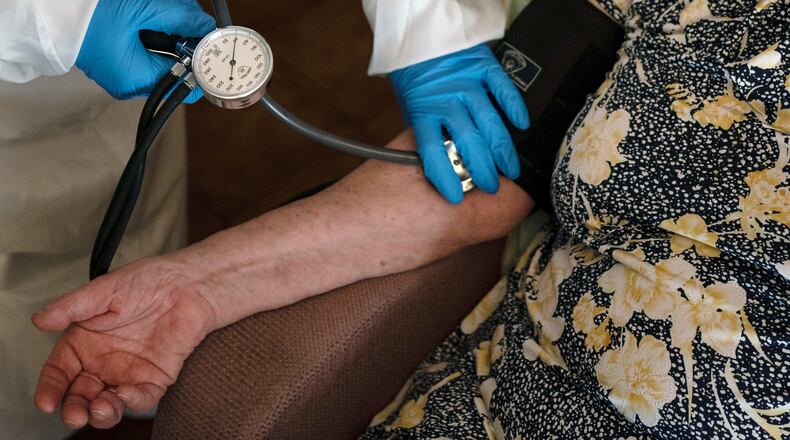It’s the first time since 2017 that the American Heart Association and the American College of Cardiology have updated the guidelines.
Among the changes are:
- Limiting alcohol intake to two or fewer drinks per day for men and one or fewer for women
- Limiting sodium intake to 2,300 milligrams per day with an ideal limit of 1,500 milligrams
- Managing stress with exercise, as well as incorporating stress-reduction techniques, such as meditation, breathing control or yoga
- Reducing body weight by at least 5% in adults who are overweight or obese
- Increasing physical activity to at least 75 to 120 minutes each week
“Twenty minutes of exercise a day is worth one blood pressure pill,” Hahn said.
In addition to exercise, Hahn recommends getting enough sleep without the use of sleep aids and engaging in regular social activities to reduce and control blood pressure.
Some patients and caregivers may find two of the new guidelines controversial, Hahn said.
The first is the recommended use of the PREVENT calculator by health care professionals.
Developed by the AHA in 2023, the calculator estimates the 10- and 30-year risk for cardiovascular disease using such variables as age, sex, blood pressure, cholesterol levels and social drivers.
There are concerns about its accuracy among different populations, which may lead to a lower risk assessment potentially resulting in fewer people being recommended for preventive medication.
Second is a guideline that people exhibiting severe hypertension but no other symptoms and who are not pregnant don’t need to immediately go to an emergency room.
Symptoms are chest pain, shortness of breath, back pain, numbness, weakness, change in vision or difficulty speaking.
“I think some doctors and patients won’t like that at all,” Hahn said.
Almost half of all U.S. adults have high blood pressure, according to the AHA. It is the leading cause of death in the U.S. and the top preventable risk factor for cardiovascular disease, including heart attack, stroke, heart failure, kidney disease, cognitive decline and dementia.
“This updated guideline is designed to support health care professionals — from primary care teams to specialists and to all clinicians across health systems — with the diagnosis and care of people with high blood pressure,” said guideline committee chairman Dr. Daniel Jones in a statement. “It also empowers patients with practical tools that can support their individual health needs as they manage their blood pressure, whether through lifestyle changes, medications or both.”
| Category | Systolic | Diastolic | |
|---|---|---|---|
| Normal | Less than 120 | and | Less than 80 |
| Elevated | 102-129 | and | Less than 80 |
| Stage 1 Hypertension | 130-139 | or | 80-89 |
| Stage 2 Hypertension | 140 or higher | or | 90 or higher |
| Severe Hypertension | Higher than 180 | and/or | Higher than 120 |
| Hypertensive Emergency | Higher than 180 | and/or | Higher than 120 |
For severe hypertension with no symptoms, call your health care provider. If exhibiting symptoms of chest pain, shortness of breath, back pain, numbness, weakness, change in vision or difficulty speaking, call 911.
About the Author

